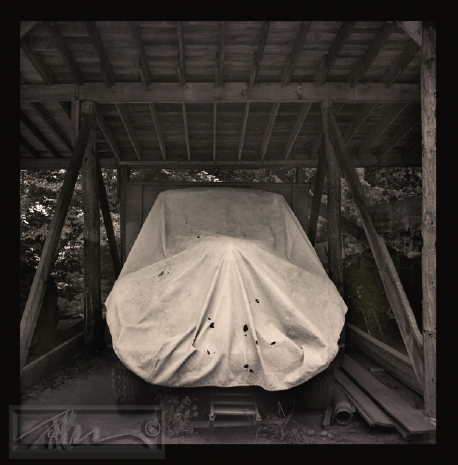Today, there seems to be an endless variety of fixed focal length and variable zoom lenses available that range from extreme wide angle to extreme telephoto. Yet, if we look at all the great images in the history of the medium, the majority of photographic images ever created up until recently, have been produced with what is referred to as the normal lens. A normal lens is one, which reproduces the normal appearance of the world as we see it.
These lenses, sometimes called standard lenses are fixed primes that produce a view that resembles the way we believe we perceive our world through normal sight. Things in the foreground, middle ground and distance are displaced visually in proportion to our real world perceptions. Objects and perspective appear to be at the correct distances and angles to our perception of them. Basically, a subject 10 feet away will appear to be 10 feet away in the image, an object at 50 feet appears to be at that distance and the horizon appears as we sense it. This is why the standard lens that used to come with analog cameras was referred to as the normal lens.
A Prime lens is a lens with a single fixed focal length. As example, a 90-mm fixed focal length is considered a 90-mm prime. Prime lenses are unifocal in that they produce a single perspective view. Because fixed lenses have fewer moving parts than zoom lenses, they can be better optimized for their particular focal length. As such, prime lenses have fewer problems related to optical aberrations. Prime lenses are usually much faster and offer a higher optical quality than zooms.
While some will argue that the world is seen as more of a wide-angle view, the facts of perspective dictate otherwise. This may be because we see with two offset lenses, which widens our overall view of the world. However, the camera is a one eyed entity and the standard lens is considered the lens that best duplicates the real perspective of our world. Things photographed through these lenses appear to be at distances, which are similar to how we envision them in the real world.
The normal focal length varies for each format. The normal view for a film format 35mm and a full frame digital camera is a 50 mm focal length lens. The lens considered as normal for 120 film is an 80 mm focal length. So, what is so special about a normal lens when you can affect your image results with a very wide angle or perhaps a long focal length lens? There are advantages to the normal lens that many do not appreciate. First and foremost is brightness. The normal lens can be produced to yield the brightest apertures. The brightest apertures are faster because the apertures are larger. Many manufacturers have produced very fast lenses in the range of f/1.4, f/1.2, or even f/1.0. These make for very fast lenses for shooting in very low lighting situations. A faster lens allows you to use a faster shutter speed.
Being able to see your world through a normal lens in a unique way can be difficult but an attainable goal. To many, it may seem easier to exploit the effects of a wide field lens or to play with the compression effects of a long focal length or a zoom lens. Today, many photographers rarely use the “normal” range of their zoom lenses, but tend to use either the wide or the telephoto extreme instead. But to take what is considered a normal view and to turn it into a very unique image requires both vision and skill. In the hands of a great photographer, the normal lens is capable of producing some of the best images possible!
For most of us growing up with film cameras, the dream of owning any focal length other than a normal lens was almost unthinkable. Owning a wide-angle lens or a good telephoto lens was in many cases prohibitive due to cost. Zoom lenses for many camera types were nonexistent. Consequently, many photographers were forced to rely on using the prime lens that was usually supplied with the camera. This forced view of the world is actually a good thing for developing ones ability to see the world.
I believe that forcing yourself to see the world through a standard view can help you to become a better photographer.
You can read about my book “Rethinking Digital Photography” here.
Please have a look at some of my other posts here.
NOTICE of Copyright: THIS POSTING AS WELL AS ALL PHOTOGRAPHS, GALLERY IMAGES, AND ILLUSTRATIONS ARE COPYRIGHT © JOHN NEEL AND ARE NOT TO BE USED FOR ANY PURPOSE WITHOUT WRITTEN CONSENT FROM THE WRITER, THE PHOTOGRAPHER AND/OR lensgarden.com. THE IDEAS EXPRESSED ARE THE PROPERTY OF THE PHOTOGRAPHER AND THE AUTHOR.



